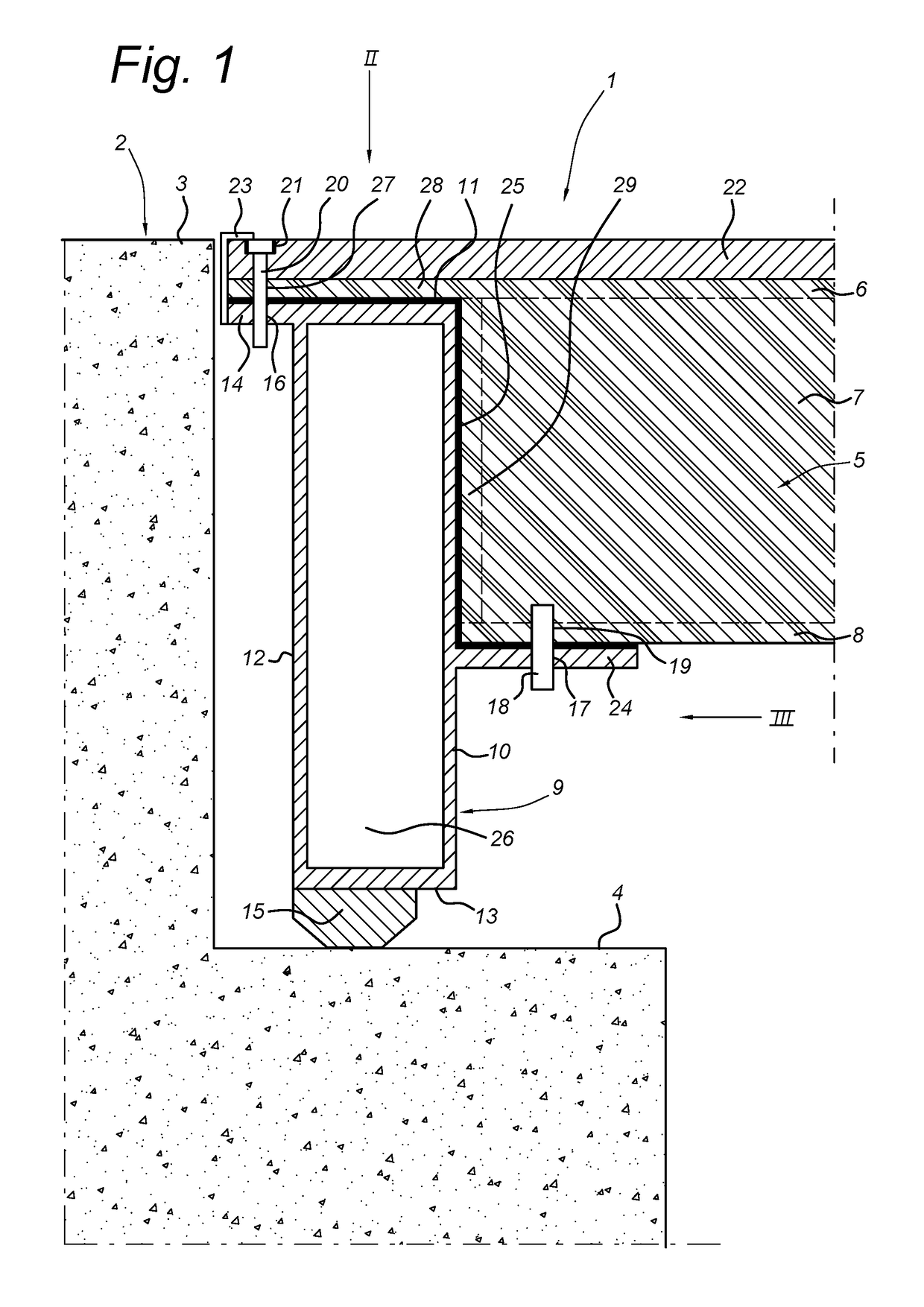Composite bridge deck and bridge construction
a composite bridge and bridge technology, applied in the field of composite bridges, can solve the problems of uneven deformation, failure of adhesion, and site of transition from steel edge, and achieve the effect of positive mechanical connection
- Summary
- Abstract
- Description
- Claims
- Application Information
AI Technical Summary
Benefits of technology
Problems solved by technology
Method used
Image
Examples
Embodiment Construction
[0024]The following is a description of exemplary embodiments of the invention, given by way of example only and with reference to the figures.
[0025]FIG. 1 shows in vertical cross section, a bridge deck 1 with an abutment 2 which in the example shown has a road surface 3 and a support 4 for the bridge deck 1 at a lower level. The bridge deck 1 itself is formed by a composite panel 5, known in itself, together with the steel edge beam 9. This composite panel diagrammatically comprises the top plastic skin 6, a bottom plastic skin 8 and the core 7 in-between. Around this, a bulkhead 29 is provided. This bulkhead 29 and the bottom plastic skin 8 of the composite panel 5 abut the front side 10 of the edge beam 9. The top plastic skin 6 extends with the protruding part 28 past the core 7 to over the top side 11 of the edge beam 9.
[0026]The edge beam 9 has a bottom flange 24 on its front side 10. On the opposing back side 12 of the edge beam 9 is a top flange 14 which connects to the top ...
PUM
| Property | Measurement | Unit |
|---|---|---|
| width | aaaaa | aaaaa |
| dimension | aaaaa | aaaaa |
| distances | aaaaa | aaaaa |
Abstract
Description
Claims
Application Information
 Login to View More
Login to View More - R&D
- Intellectual Property
- Life Sciences
- Materials
- Tech Scout
- Unparalleled Data Quality
- Higher Quality Content
- 60% Fewer Hallucinations
Browse by: Latest US Patents, China's latest patents, Technical Efficacy Thesaurus, Application Domain, Technology Topic, Popular Technical Reports.
© 2025 PatSnap. All rights reserved.Legal|Privacy policy|Modern Slavery Act Transparency Statement|Sitemap|About US| Contact US: help@patsnap.com


